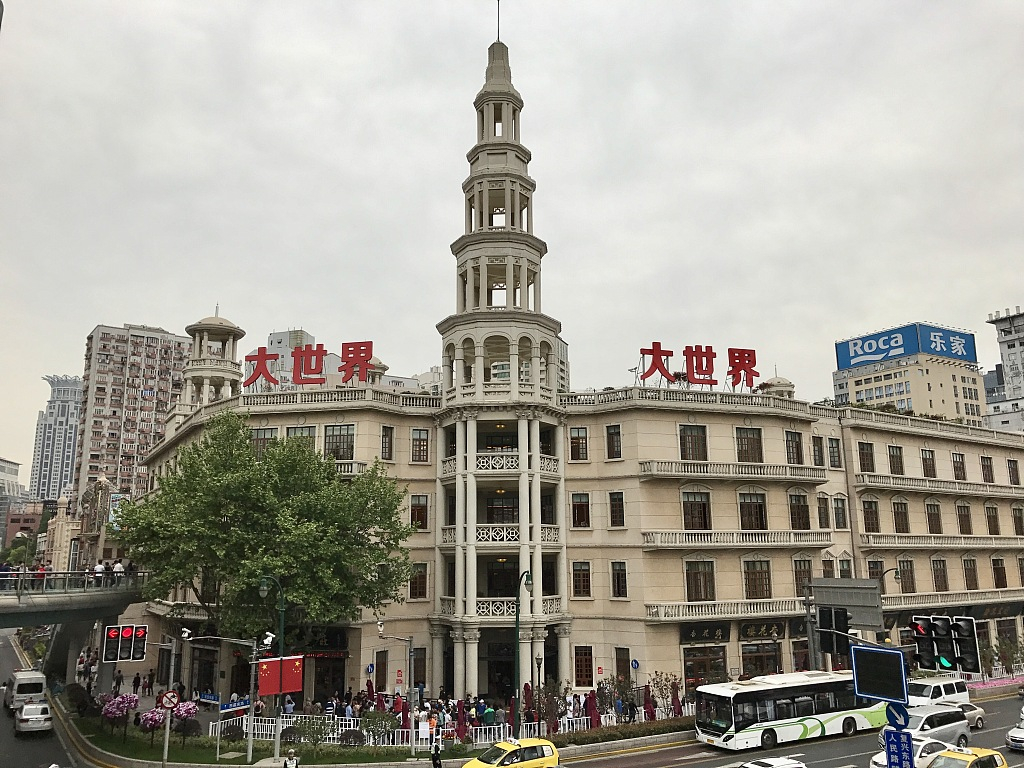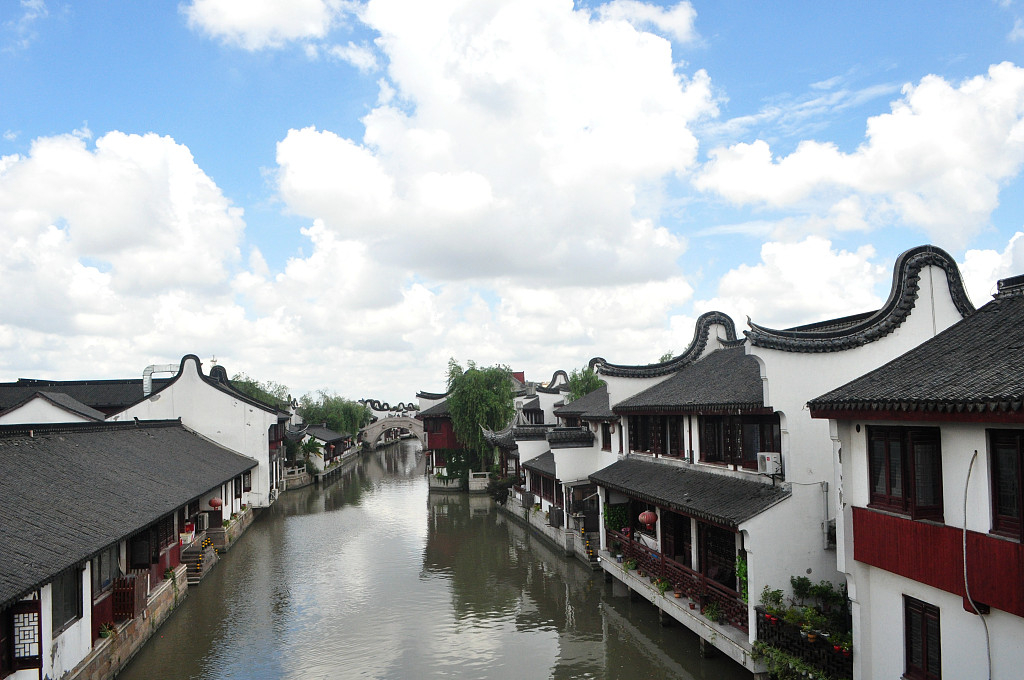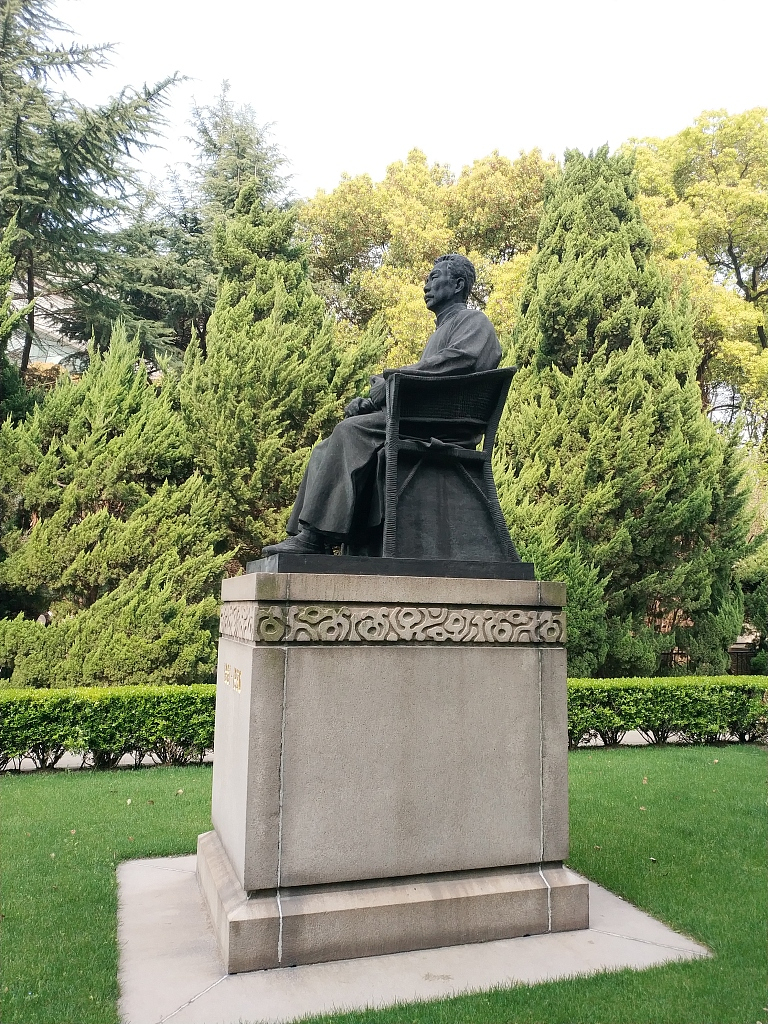If you want to see Shanghai through the eyes of its older citizens, Metro Line 8 will show you the way. The line takes you to laochengxiang, literally "old towns," where even the most experienced cabbies can get lost and traditions of the past are preserved.
Dashijie Station: Shanghai Great World
Mention Dashijie and older locals invariably blurt out “magic mirrors!”
For a long time, distortion mirrors were a drawing card at this 100-year-old entertainment venue.
The site was closed in 2003 for a 14-year restoration, but it lost much of its attraction after the makeover. Still, memories of the original site linger.
In the 1930s, Dashijie, a blend of Western and Chinese architectural styles, was a very popular weekend destination for families.
The site, at the time owned by a mob boss, staged opera and acrobatic shows, screened the latest Hollywood movies and introduced thrilling rides. Its 12 distortion mirrors were a novelty never seen before in the city.
After it reopened in 2017, the site never captured the magic of the past.
However, it did become a landmark where visitors could enjoy local folk arts and shows such as acrobatic performances.
Parents nowadays take their children to Dashijie amid memories of their own childhoods.
Address: 1 Xizang Rd S.

The Shanghai Great World (Dashijie) building. /VCG Photo
The Shanghai Great World (Dashijie) building. /VCG Photo
Shendu Highway Station: Zhaojialou Ancient Town
Many visitors who go to Zhaojialou Ancient Town in Minhang are more interested in cuisine than canals. The old water town is famous for its mutton and pork knuckles. But beyond food, the 800-year-old town has much to offer.
It's become a tourist destination only in recent years – a living museum, of sorts, of the ancient lifestyle in outlying Shanghai.
Liyuan Garden is a must-visit spot. The garden has 99 buildings constructed during the Qing Dynasty (1644-1911) and most are still in good condition. Some of the buildings have been modified into small museums of local history. One of them is dedicated to Qin Yubo (1296-1373), a magistrate for what was then Shanghai County. Many people may not know he is the god worshipped in the City God Temple near Yuyuan Garden. Zhaojialou was his hometown. After his death, the emperor canonized him as the guardian god of Shanghai.
Address: 2059 Shendu Highway

A view of the Zhaojialou Ancient Town in Minhang, Shanghai. /VCG Photo
A view of the Zhaojialou Ancient Town in Minhang, Shanghai. /VCG Photo
Hongkou Football Stadium Station: Lu Xun Park
In the history of Chinese literature, author Lu Xun (1881-1936) occupies a special place. Every schoolchild reads his works and memorizes his most famous words.
Lu Xun Park in Hongkou District reveals much more than textbooks about this celebrated writer, essayist, poet and literary critic. The park is built around the author's grave, near the area where he lived most of his life.
A museum in the park displays around 20,000 items related to Lu's career and life. Many recount how he fought for freedom and social justice through his sharp style of writing.
Around the park are other sites of significance in the author's life. One of them is the former Uchiyama Bookstore, now operating as a bank branch.
A small section of the bank is devoted to a museum recording the history of the building.
The original bookstore, operated by Japanese couple Kanzo and Miki Uchiyama, opened in 1929. It initially sold Christian books, expanding later to medical tomes and books promoting progressive ideology. When Lu was hunted by agents of the then Kuomintang government, he sometimes hid in the bookstore and was protected by the couple.
On the second floor of the bank, visitors can learn more about China and the Japanese during that turbulent era.
Address: 280 Tian'aizhi Rd

A sculpture of Lu Xun at the park. /VCG Photo
A sculpture of Lu Xun at the park. /VCG Photo
Laoximen Station: The Confucius Temple and Dajing Tower
The oldest Confucius Temple in laochengxiang has a history of more than 700 years, but its current layout is credited to the Qing Dynasty.
Confucius is regarded as the teacher of all teachers, leading many people to believe that his blessing will help students taking important exams. That's why the temple is always super busy every year just ahead of college and high school entrance exams. Parents go to the temple to buy wishing plaques or amulets for their children.
Confucius was also a great scholar, and that legacy lends itself to another activity at the temple. A secondhand book market started up there about 20 years ago. Originally, it was held four times a year, but it was so popular that it became weekly.
Every weekend, up to 9,000 people browsed the more than 200 booths at the market, looking for books often out of print now.
The market now is falling victim to the digital age. Many people now find the old books they want online. The market has remained, however, but the number of sellers has declined to a handful of booths that attract mainly older browsers.
No matter how sparse their numbers, sellers and buyers hold the market dear to their hearts.
Not far from the temple is an isolated piece of wall that preserves tradition as much as the booksellers. The 30-meter stretch of wall was once part of the city's larger fortification. Built during the Ming Dynasty (1368-1644), it is the only section of the wall that remains. A temple called Dajing Tower was built at the wall to worship Guan Yu, a general of the Three Kingdoms period (220-265).
Although the temple has been rebuilt many times during its history, the wall itself was never destroyed. There are still repair marks on the bricks left from the Qing Dynasty.
Address: 215 Wenmiao Rd
Source(s): Shanghai Daily